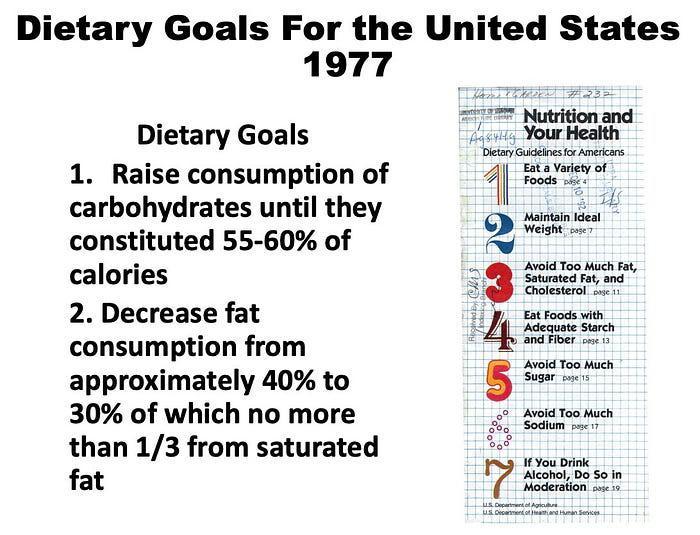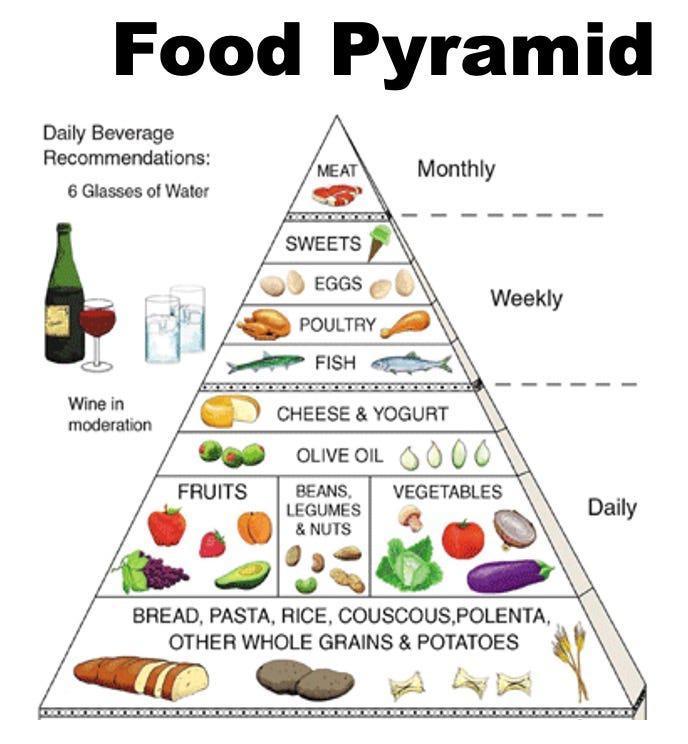The Origin of the Epidemic- The 1977 Dietary Guidelines and Food Pyramid
Before the 1970s, you ate what your mother cooked. The government, nutritionists, and doctors did not interfere with mothers. In the 1970s, when the U.S. government told people for the first time in history to use its 1977 Dietary Guidelines for Americans, it was a huge change for people. The verdict was to reduce fat and eat more carbohydrates.
Since these dietary guidelines had little solid scientific evidence, they were updated every five years, often reflecting the national sentiment of the time. In 1977, white bread was good (low in fat), while in 2020 (the latest version of the dietary guidelines), it is bad (high glycemic index, highly refined, highly processed). In 1977, fatty foods like nuts, fatty fish, and avocados were very bad (causing heart disease, didn’t you know?). In 2020, nuts, fatty fish, and avocados are very good (preventing heart disease, didn’t you know?).

The goal in 1977 was to consume 55-60% of daily calories in the form of starches and other carbohydrates. These statements had no strong scientific basis, just a bunch of opinions from people who called themselves experts. This led to the low-fat era of the 1980s and the food pyramid of the early 1990s, with all its counterfactual glory.

The Rise of Nutritionalism
There are several important issues, although the overall picture has not been obvious for decades. First, the dietary guidelines led to the rise of nutritionalism - the belief that all foods can be explained as a combination of their macronutrients (carbohydrates, fats, proteins) and micronutrients (vitamins and minerals). People began to view food as its components…
